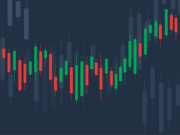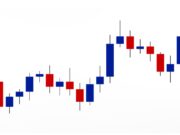Market noise is relentless. Financial headlines scream about the same handful of stocks while important opportunities—the kind that can meaningfully impact your portfolio—often fly completely under the radar.
That’s exactly why we publish this watchlist each week.
While most investors are distracted by mainstream narratives, we’re digging through earnings transcripts, analyzing technical setups, and monitoring institutional money flows to identify companies at potential inflection points. Our focus isn’t on what’s already priced in, but rather on what the market hasn’t fully appreciated yet.
Each week, we spotlight three stocks that merit your attention. We focus on opportunities where timing, valuation, and catalysts align to create potentially favorable entry points.
Our rigorous analysis goes beyond surface-level metrics to identify opportunities that most retail investors don’t have time to uncover. Each pick comes with clear reasoning, specific triggers to watch for, and a compelling risk-reward profile designed to help you make more informed investment decisions.
Here’s what caught our eye this week:
Illinois Tool Works (ITW)
Illinois Tool Works stands out as an exceptional Dividend King opportunity, having increased its dividend for an impressive 61 consecutive years while demonstrating remarkable strategic execution over multiple business cycles. Trading at around $248 per share, the industrial conglomerate offers investors a compelling 2.5% dividend yield backed by strong cash flow generation and a proven ability to navigate challenging economic environments. What makes ITW particularly attractive is its ambitious 2030 strategic plan targeting 30% operating margins and 9-10% annual earnings per share growth, which would support 7% annual dividend increases – a bold but achievable goal given the company’s track record of meeting or exceeding strategic objectives.
The company’s diversified business model across seven key segments – including automotive OEM, construction products, food equipment, and specialty products – provides natural resilience during economic uncertainty. ITW’s Customer-Back Innovation process, which focuses on responding to customer needs rather than developing products in isolation, has proven effective in driving organic growth while maintaining pricing power. Despite facing tariff pressures and macro headwinds that contributed to a 3.4% revenue decline in Q1 2025, management maintained full-year guidance for $10.15-$10.55 in GAAP EPS, demonstrating confidence in the company’s ability to navigate current challenges.
From a valuation perspective, ITW trades at approximately 23.7 times forward earnings based on 2025 guidance midpoint – a reasonable multiple for a high-quality industrial business with proven pricing power and operational excellence. The company’s strategy of converting 100% of net income into free cash flow supports not only dividend growth but also share repurchases and organic investments that drive long-term competitiveness. For income-focused investors seeking a reliable dividend grower with exposure to diverse industrial end markets, ITW’s combination of dividend safety, growth potential, and reasonable valuation creates an attractive entry point for building long-term wealth through passive income.
Copart (CPRT)
Copart presents a compelling buy-the-dip opportunity following a 20% decline from its recent highs, creating an attractive entry point in one of the market’s most consistent long-term performers. Trading at around $50 per share, the salvaged vehicle auction leader has delivered remarkable returns since its 1994 IPO, becoming a 341-bagger for early investors. What makes this pullback particularly attractive is that Copart now trades at 28 times cash from operations – its lowest valuation by this metric in over two years and close to its decade-long average, while maintaining its dominant 45% market share in a virtual duopoly with RB Global that controls roughly 80% of the total salvage vehicle industry.
The company’s competitive advantages create a formidable moat that becomes increasingly valuable as vehicle complexity grows. Copart benefits from significant barriers to entry through NIMBY (not in my back yard) sentiment that makes securing zoning approval for new salvage yards extremely difficult. Additionally, as vehicles become more technologically sophisticated and expensive to repair, insurance companies are more likely to declare cars “totaled” rather than pay for complex repairs – a secular trend that should drive long-term volume growth for Copart’s auction platform. The company’s ownership of most properties (versus competitors who lease) provides both cost advantages and balance sheet strength.
Copart’s financial position further strengthens the investment case, with a debt-free balance sheet and $4.4 billion in cash representing approximately 9% of its market capitalization. This financial flexibility enables strategic acquisitions, share repurchases, or simply weathering market turbulence while competitors face capital constraints. Recent revenue growth of 10% year-over-year demonstrates the business’s resilience even amid broader economic uncertainty. For investors seeking exposure to a defensive yet growing business model with secular tailwinds and a rare valuation discount, Copart’s current setup offers an exceptional risk-reward profile for long-term wealth creation.
Visa (V)
Visa exemplifies the powerful intersection of momentum investing and defensive quality, currently appearing on both momentum factor indices and traditional “best stocks” lists while demonstrating remarkable technical strength. The payment processing giant has shown exceptional resilience during recent market volatility, particularly during the early April trade war panic where it demonstrated textbook accumulation patterns by bouncing decisively off its 200-day moving average. What makes Visa particularly compelling is its position as a momentum leader that also possesses traditionally defensive characteristics – a rare combination that has made it a standout performer in 2025’s challenging market environment.
The company’s business model provides natural defensive qualities through its essential role in global commerce, generating revenue from transaction volumes that remain relatively stable even during economic uncertainty. As a constituent of both momentum factor ETFs and defensive stock selections, Visa benefits from the ongoing shift toward digital payments while maintaining pricing power through its dominant network effects. The stock’s technical setup shows it approaching a potential breakout above its February all-time highs, suggesting continued institutional accumulation despite broader market volatility.
Visa’s inclusion in major momentum strategies reflects the market’s recognition of its sustainable competitive advantages and consistent execution. The momentum factor has been the best-performing investment style in 2025, outperforming the S&P 500 by 11% year-to-date, and Visa represents one of the highest-quality names within this winning strategy. For investors seeking exposure to the momentum theme without sacrificing defensive characteristics, Visa offers an optimal combination of growth potential, market leadership, and business stability. The company’s ability to generate consistent returns across multiple market cycles while participating in long-term digital payment trends creates a compelling investment opportunity for both growth and defensive-oriented portfolios.











